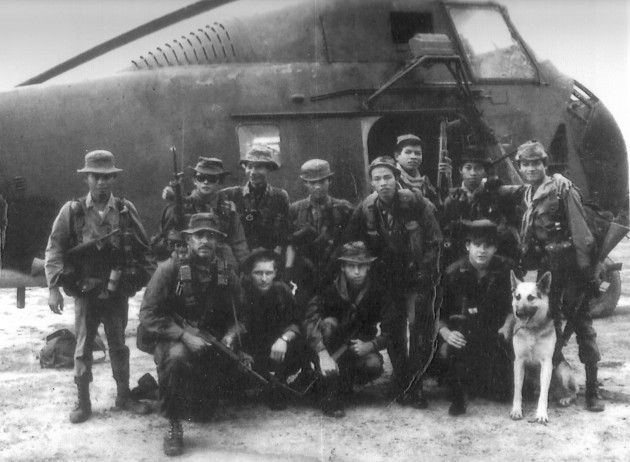
By: John Meyer
Glen Oliver Lane and the fate of his small SOG reconnaissance team still haunt me to this day.
We never met. Our paths crossed only momentarily 53 years ago. On May 20, 1968, myself and two to other young, green Green Berets entered year four of the top secret war that was fought during the Vietnam War across the fence in Laos, Cambodia and N. Vietnam. It was fought for eight years, under the aegis of the Military Assistance Command Vietnam – Studies and Observations Group, or simply SOG.
The three of us had completed our in-country training in Nha Trang, South Vietnam. We received our top secret SOG briefing in Da Nang – which included signing government documents vowing not to discuss, write about or photograph any aspect of SOG’s mission for 20 years. We were told that if we violated that agreement, we would be prosecuted to the fullest extent of the law and that we were to tell no one, parents, girl friends, lovers or friends about SOG.
SFC. Glen O. Lane (Bio and Pictures)
(Photo courtesy John Stryker Meyer)
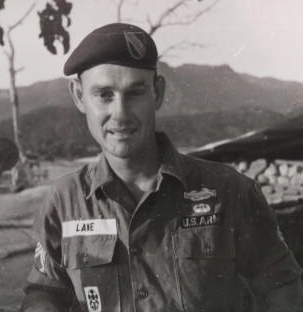
On the morning of May 20 the South Vietnamese Air Force’s 219th Special Operations Squadron flew us north from Da Nang to FOB 1 in Phu Bai, located 10 miles south of Hue. The three of us exited the H-34 Sikorsky helicopter as a recon team — code named ST Idaho — boarded the nine-cylinder war bird and headed west into one of the deadliest SOG target areas: the A Shau Valley.
Because the helicopter crew chief told us to hurriedly exit the chopper, we didn’t pay much attention to the six men from ST Idaho who boarded it and headed west toward Laos and the A Shau Valley. Since 1965. three Green Beret A Camps were driven from that valley by communist North Vietnam Army troops because it was a vital artery where enemy soldiers and supplies from the north flowed into South Vietnam.
Had I been more observant, I would have seen the team leader, code-named One-Zero, Glen Oliver Lane; his assistant team leader, code-named One-One; Robert Duval Owen, and four tough, fearless South Vietnamese indigenous troops climb aboard the chopper through its only passenger door on the right side of the helicopter.
Since there was so much enemy activity in the A Shau Valley and down the Ho Chi Minh Trail, ST Idaho’s mission was to find out what the enemy was up to and if any more future attacks were being planned — such as the Tet Offensive earlier in the year, where communist forces struck in surprise attacks across South Vietnam during the national holiday of Tet.
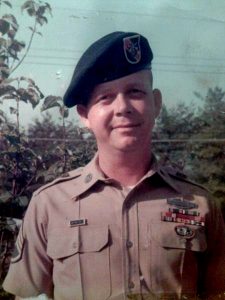
SFC Robert D. Owen
(Photo courtesy John Stryker Meyer)
Shortly after I entered FOB 1, I met Staff Sgt. Robert J. “Spider” Parks, whom I first encountered while going through Special Forces Training Group in 1967. Spider explained that he had been a member of ST Idaho, but was recently promoted to being a team leader of another recon team at FOB 1, hence he was nervous about the safety and well being of his old team, which he had run several missions with prior to Lane determining that Spider was ready to lead another team.
The South Vietnamese aircrews — code-named Kingbees — returned to FOB 1 and reported that ST Idaho had been inserted into the target area without incident and that they had received a “Team OK” from the radio operator on the team.
Vietnamese Air Force 219th Kingbee H-34 Helicopters – Kingbee
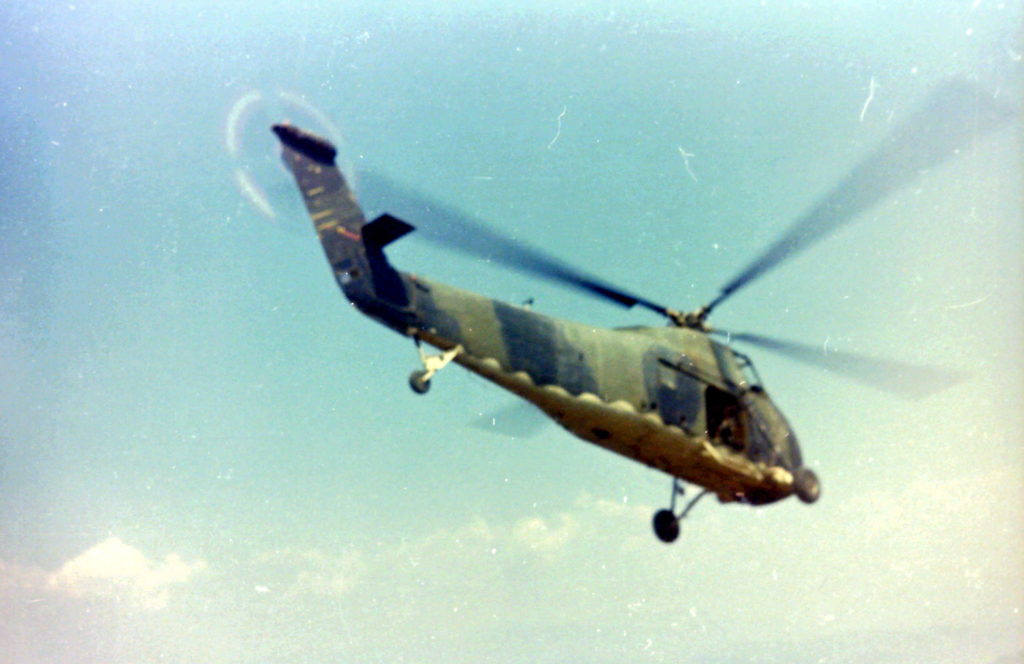
Concern for ST Idaho
However, during the afternoon, Spider became concerned when he learned that ST Idaho had failed to make a commo check with the Forward Air Controllers – code named Coveys – who flew over the target area twice during daylight hours.
By nightfall, all attention was on the fate of ST Idaho. Spider and several other spike team members were very concerned because there had been no commo from the team since the initial “Team OK.” Covey – the code name for SOG forward air controllers, hadn’t been able to raise anyone all day. Covey flew an extra mission that night, but to no avail. The airborne command aircraft that flew over Southeast Asia 24 hours a day was also unable to raise ST Idaho during the night.
By early morning, the mood in camp was grave. Spider said ST Oregon had been selected to run a Bright Light mission into the Whiskey Five target to investigate what had happened to ST Idaho. Mike Tucker and George Sternberg were the veteran recon members of ST Oregon. Tucker was a no-nonsense One-Zero who had many missions under his belt. Sternberg had run several missions from FOB 3 at Khe Sanh during the highly publicized siege of the Marine base in early 1968.
Together on ST Oregon, both Tucker and Sternberg respected each other’s prowess in the field so much that they rotated One-Zero duty with strong results. They were among the first to photograph NVA bulldozer trails cutting swaths through the triple canopy jungle to expand the Ho Chi Minh Trail Complex. They photographed NVA tanks, including one shot where the NVA star was visible, prior to the NVA hitting and overrunning the Lang Vei A Camp west of Khe Sanh earlier in the year.
On one mission they had captured an NVA POW and were flying back to FOB 1 in a Kingbee when one of the team members discovered that the POW was a woman. Sternberg and the team member holding the POW were so startled that they loosened their grip momentarily. The woman bolted from the H-34 and jumped to her death.
For the Bright Light, former Idaho team member and fearless medic Stephen Perry was added to their team. Tucker opted to take one Vietnamese team member from ST Idaho, Ha, on the mission. Ha was highly respected by the veteran SF men. He was fearless in the field, but more importantly, he could provide insight into ST Idaho tactics.
Spider explained that a Bright Light team went in armed to the teeth, carrying only weapons, ammunition, hand grenades, bandages, body bags and maybe one canteen of water. No food. Bright Lights were the most dangerous of all missions, designed to go in to find and recover downed pilots, lost or injured SF team members or to bring back the bodies of SF troops or fliers killed in action.
On most Bright Light missions, there were plenty of NVA waiting. Tucker and Sternberg rounded out their Bright Light team with the best indigenous team members from ST Oregon. Spider was designated to fly in the “chase” Kingbee, which was a chopper that had a medic or extra SF personnel on board. If the lead Kingbee went down, the chase ship was designated to rescue them
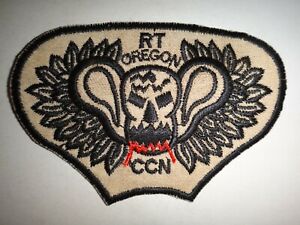
RT Oregon Patch
ST Oregon Inserted
ST Oregon was inserted on the same Landing Zone where ST Idaho had been inserted two days earlier, in hopes of finding clues as to what happened to it, knowing full well that a lack of commo from a team in the field usually meant it was in deep trouble, deep in enemy-held territory, with no immediate relief from conventional ground forces, artillery or tank support.
ST Oregon was on the ground a short while before it encountered numerous NVA troops, some armed with American weapons, firing Colt CAR-15s and throwing M-26 hand grenades. The team retreated into a huge bomb crater as the NVA closed in on them, close enough to throw hand grenades into the crater. Fortunately, A-1 Skyraiders arrived and began making gun runs so close to the team’s perimeter in the bomb crater, that the men of ST Oregon could count the bolts in the single-engine propeller war plane as exploding rounds from it killed NVA soldiers charging the team. The rounds were so close to the team that they covered the team members with dirt, wood chips, stones and leaves.
During the intense firefight, one Vietnamese team member was killed, all of the Americans – Sternberg, Tucker and Perry – were wounded from shrapnel and/or bullet wounds. One hand grenade literally tore Sternberg’s jungle boot off of his foot. The indigenous soldier, Ha, suffered 94 separate wounds, while Perry was the most seriously injured American on that Bright Light mission. They were rescued by two heroic Kingbee crews who pulled out the heavily wounded team. Upon extraction, an AK-47 round tore through the thin wall of the H-34 and struck a battery Sternberg was carrying in his vest. The impact of that round lifted Sternberg out of his seat, slammed him to the floor amid the hydraulic fluids that were leaking inside the helicopter, breaking two ribs. The URC-10 battery was a life saver for Sternberg.
Because there was confusion after the second Kingbee left the LZ with the remainder of ST Oregon, a third Kingbee, the chase helicopter with Spider Parks in it, landed near the bomb crater. Parks ran out to the bomb crater, saw no living team members and returned to the Kingbee while under heavy enemy gunfire. As it lifted off the ground the relentless heavy communist gunfire killed the South Vietnamese door gunner sitting next to Spider.
Two Bright Light KIAs
The final count: For ST Oregon, one KIA, every American and indigenous troop were wounded. One Kingbee door gunner KIA. Dozens of NVA were killed.
Hopes to find clues as to the whereabouts of ST Idaho, were dashed. Tucker and Sternberg told S-2 debriefers that they had found what appeared to be a trail in the grass that went away from the LZ, which ST Idaho may have used. That was the only possible clue they found. Getting hit with M-26 grenade fragments and CAR-15 gunfire meant ST Idaho had either been wiped out or captured.
Because enemy activity in that target remained highly visible, and due to the extreme casualties that ST Oregon took in its valiant attempt to find ST Idaho, no further efforts were made to find the lost team. Thus the question hung heavy in the air and in the minds of every recon man at FOB 1: What happened to ST Idaho?
Lane was an experienced, highly regarded One-Zero. He had served in Korea, saw heavy combat there and since taking over ST Idaho had run several successful missions before the ill-fated May 20th mission.
On a personal level, at that time, I was haunted by this question: If a veteran Green Beret with the experience of Lane on a veteran recon team, an experienced Green Beret Owen are wiped out along with four tough, fearless Vietnamese team members, what will happen to a recon rookie like me?
The war waited for no one. Spider became the new One-Zero for ST Idaho, Don Wolken became the One-One and I became the One-Two radio operator while Nguyen Van Sau became the Vietnamese team leader, Zero-One. Sau was fearless, had three years experience and was a simple farmer who hated communism and had seen first hand the tyranny of it.
RT Idaho
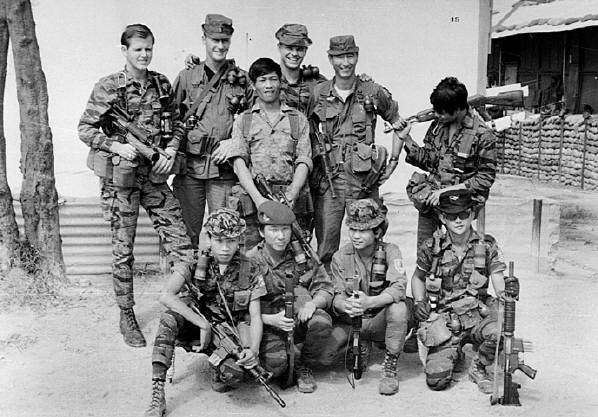
ST Idaho Rebuilt
After going through an intense training regimen, which included pulling local night ambushes and patrols, ST Idaho ran its first mission east of the A Shau Valley, teaming with another FOB 1 recon team for an area reconnaissance. In between the monsoon season and heavy rains, ST Idaho inserted Air Force sensors in the A Shau Valley and outside the old Khe Sanh compound.
By October, Wolken was the One-Zero. On Oct. 6, 1968, we inserted into a target area named E-4, with a secondary mission of looking for an NVA POW camp. Because Lane and the old ST Idaho were still fresh on our minds, the secondary became our primary mission in our minds. If there was any chance that we could find that camp, we wanted to do so.
However, the NVA had other plans. On Oct. 7, after we found a small knoll of high ground, the communist forces hit us with wave attacks and attempts to get inside our defensive perimeter. At one point, as I attempted to make radio contact with any aircraft in the area, NVA soldiers began stacking up the bodies of dead NVA soldiers we had killed on the hill’s embankment, in an effort to build a cadaver wall they could climb and to gain a height advantage over ST Idaho so they could shoot down toward us. A Kingbee pulled us out of E-4 at last light. When they did, I was down to my last magazine of ammo, my last hand grenade and the radio battery was getting low. That Kingbee had 48 bullet holes in it.
Back in camp, we told Spider that we tried to find the NVA POW camp, but got cut short with the deadly firefight that lasted more than four hours.
The three of us again toasted Glen Lane, Robert Owen and the fearless indigenous troops who we assumed died that day in the A Shau Valley. None of those men would have surrendered to the brutal communists
POW / MIA’s

Among 50 MIAs
Thus today, the fate of Lane and Owen haunt me and other SOG soldiers as the federal government addresses the compelling issue of bringing home the remains of 1,584 (as of April 4, 2021) American listed as missing in action across Southeast Asia from the Vietnam War.
Lane and Owen are among approximately 50 Green Berets who remain listed as missing in action or killed in action, but their bodies haven’t been returned from the secret war in Laos, Cambodia and N. Vietnam. In addition there are approximately 80 aviators from the Army, Air Force and Marine Corps who died in support of those Green Berets on the ground across the fence behind enemy lines. Many of those missing have siblings and family members who have died without knowing of the heroic service those men performed during the deadly secret war in Southeast Asia – which turned out to have the highest casualty rate of the war.
A few years ago, DoD formed the Defense POW/MIA Accounting Agency (DPAA) that consolidated three previous federal operations: the Defense POW/Missing Personnel Office (DPMO), the Joint POW/MIA Accounting Command (JPAC), and the Air Force’s Life Sciences Equipment Laboratory at Wright-Patterson Air Force Base in Ohio.
Vietnam veterans have publicly stressed their hope that through the reorganization DPAA’s efforts to find and return Vietnam veterans’ remains from Southeast Asia would not be deemphasized.
Sadly, in my opinion, in regards to this sacred mission in Southeast Asia, DPAA leadership has failed those of us who have lost comrades-in-arms and the families of those lost and never recovered Americans. The upper DPAA leadership gives public lip service to this mission while gutting the interior management of DPAA’s management structure to obtain higher body counts from WW II/Korean War sites.
On a very personal level, myself, Spider Parks and every member of ST/RT Idaho, hope that the remains of Lane and Owen would be found and returned to the United States for proper burial and closure. And, we are joined by the families of all POW/MIAs whose remains have not been located, identified and returned to the U.S. for proper recognition and burial.
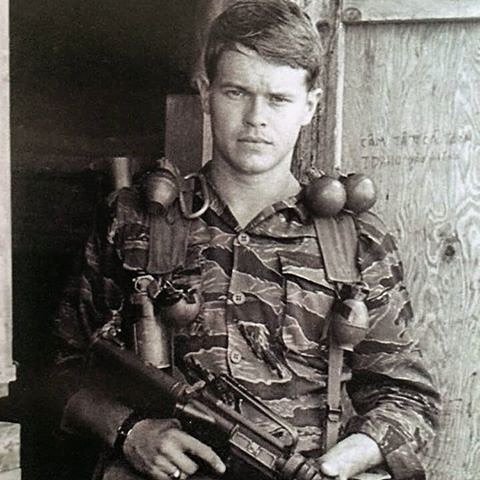
John Stryker Meyer is an author and U.S. Army Special Forces combat veteran who served two tours of duty running recon with the Studies and Observations Group, also known as MACV-SOG. Meyer has authored three books: Across The Fence: The Secret War in Vietnam — Expanded Edition, and On The Ground: The Secret War in Vietnam, that he co-authored with fellow SOG recon Green Beret John Peters. Both are available as audiobooks and e-books on Amazon.com. His third book, SOG Chronicles Volume One, is available as paperback and as an e-book on Amazon. He also has appeared in eight Jocko Podcasts in YouTube presentations, beginning with Jocko Podcast # 180.


